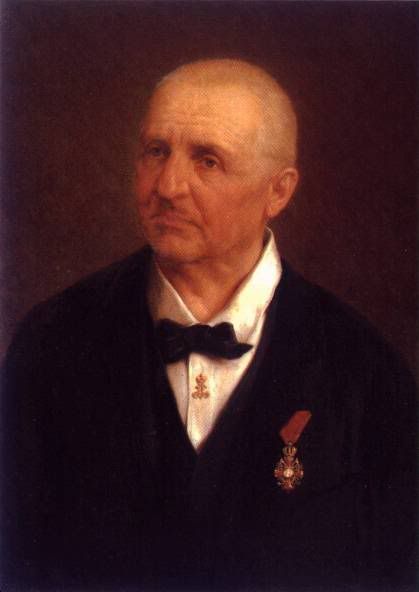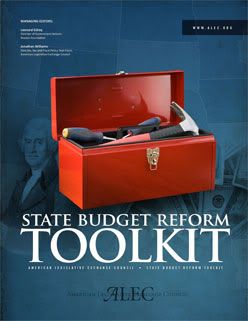
Anton Bruckner is one of those composers that is often overlooked in the rush to hear the greats like Bach, Beethoven, Mozart and Tchaikovsky. The Symphony No. 9 in D Minor is my favorite symphony that he composed, and I consider this version the best rendition of that symphony.
Composer: Anton Bruckner [Wikipedia] [The Bruckner Journal] [The Bruckner Discography] [Bruckner on Classical Net]
Conductor: Johannes Wildner [web] Discography: [Discog] [Amazon] [Arkiv Music]
Performers: New Philharmonic Orchestra of Westphalia [web] [bio] [Discography]

The Samale-Phillips-Cohrs-Mazzuca score was first performed on 3rd December 1991 in Linz, Austria, and published in the same year. The sources for the entire Ninth have been appearing successively in new publications in the Bruckner Complete Edition since 1994. Since then, interest in this score has steadily increased. On the other hand, the music world, invoking a misunderstood notion of "Werktreue", or fidelity to the printed page, often refuses to acknowledge the wishes of a composer, not to speak of the recent findings of serious source scholarship. This by no means applies only to Bruckner: in general, dogmatic and at the same time uninformed adherents of the dubious notion that only a composer's final score has any validity enjoy rejecting completions of fragmentary works. Here, as the conductor and musicologist Peter Gülke once fittingly put it, "intellectual sloth compromises itself with the trappings of humility".Source: GoldieG89
Source: Wikipedia
The symphony has four movements, although the fourth is incomplete and fragmentary. Of this finale, it seems that much material in full score may have been lost very soon after the composer's death, and therefore large sections exist only in two-stave sketch format. The placement of the Scherzo second, and the key, D minor, are only two elements this work has in common with Beethoven's Ninth Symphony.The symphony is so often performed without any sort of finale that some authors describe "the form of this symphony [as] ... a massive arch, two slow movements straddling an energetic Scherzo."[1]The score calls for three each of flutes, oboes, clarinets in B-flat and A (Adagio only), bassoons, with eight horns (5.–8. Hrn. doubling on Wagner tubas), three trumpets in F, three trombones, contrabass tuba, timpani and strings.
First movementBruckner's tendency to telescope sonata form development and recapitulation finds its fullest realization in this movement, the form of which Robert Simpson describes as "Statement, Counterstatement and Coda." An unusually large number of motifs are given in the first subject group, and these are substantially and richly developed on restatement and in the coda. Bruckner also cites material from his earlier works: at a point near the coda, Bruckner quotes a passage from the first movement of his Seventh Symphony. The concluding page of the movement, in addition to the usual tonic (I) and dominant (V) chords, given out in a blaze of open fifths, uses a Neapolitan flat (ii) in grinding dissonance with both I and V.
Second movementThe opening chord of the Scherzo, often cited as prophetic of the harmonic advances of the 20th century, is tonally ambiguous in regard to the principal D minor tonality of the movement. It could be said that folk elements are still in evidence, as in other Bruckner scherzi, but this music is of such savagery that such naïve elements are easier to ignore, even if they were intended by the composer.The Trio is in the remote key of F-sharp major, and unusually fast in tempo for a Trio.
Third movementBruckner called this movement his "Farewell to Life." It begins in tonal ambiguity, and is the most troubled opening to a Bruckner adagio yet: though within bars it achieves lyrical serenity and awe. Throughout its course, the movement goes back to some of the troubled moods of the earlier movements. A dolente call by the oboe - a quote of the Kyrie of Mass No. 3 - introduces the repeat of the first theme, which is underlined by dramatic trombone appeals. Shortly after, Bruckner also quotes, as a kind of supplication, the Miserere nobis from the Gloria of his Mass in D minor. The following final climax, given by full orchestra, concludes on the most dissonant chord. Thereafter, in the most serene coda yet, the music alludes to the coda of the Adagio of the Eighth Symphony, and also hints at the Seventh Symphony. It is these measures of music which conclude most live performances and recordings of the symphony, though Bruckner was insistent that they be succeeded by a final, fourth movement.
Fourth movementBruckner had conceived the entire movement; whether the manuscripts he left would have made up the final form of the Finale is debatable. Several bifolios of the emerging autograph score survived, consecutively numbered by Bruckner himself, as well as numerous discarded bifolios and particellos sketches. The surviving manuscripts were all systematically ordered and published in a notable facsimile reprint, edited by J. A. Phillips, in the Bruckner Complete Edition, Vienna.Because of Bruckner's individual composing habits, reconstructing the Finale is in some ways easier, and in some ways harder, than it would be to reconstruct an unfinished piece by another composer. Compounding the problem, collectible hunters ransacked Bruckner's house soon after his death. Sketches for the Finale have been found as far away from Austria as Washington D.C.Large portions of the movement were almost completely orchestrated, and even some eminent sketches have been found for the coda (the initial crescendo/28 bars, and the progression towards the final cadence, even proceeding into the final tonic pedalpoint/in all 32 bars), but only hearsay suggesting the coda would have integrated themes from all four movements: The Bruckner scholars Max Graf and Max Auer reported that they have actually seen such a sketch when they had access to the manuscripts, at that time in the possession of Franz Schalk. Today such a sketch appears to be lost.More importantly than the loss of the score bifolios of the coda itself, composer and Bruckner scholar Robert Simpson asserts in his book The Essence of Bruckner, is that the sketches that survive do not support the momentum to support such a conclusion. Some people[who?] think that there is no real inner continuity or coherence inherent to indicate an organically growing musical structure. But in fact, the publications of the Bruckner-Gesamtausgabe edited by John Phillips revealed that Bruckner has left an emerging autograph score, numbered consecutively bifolio by bifolio, which constituted the intact score, at least up to the beginning of the coda. Around 50% of this final phase must be considered lost today.Bruckner knew he might not live to complete this symphony and suggested his Te Deum be played at the end of the concert. The presence in the sketches of the figuration heard in quarter-notes at the outset of the Te Deum led to a supposition that Bruckner was composing a link or transition between the two works. In fact, the sketch for such a transition can be found on two bifolios of the emerging autograph score. Some people think that at best this would have been a makeshift solution. The C major setting of the Te Deum conflicts with the D minor setting of the rest of the symphony. Because of this tonal clash, the Te Deum is rarely used as the Finale. However, others think it better to follow the composer's own wish and so argue against the tonal clash theory, since the Adagio ends in another key (E major) as well.
Source: Wikipedia
Anton Bruckner (4 September 1824 – 11 October 1896) was an Austrian composer known for his symphonies, masses, and motets. The first are considered emblematic of the final stage of Austro-German Romanticism because of their rich harmonic language, strongly polyphonic character, and considerable length.[1] Bruckner's compositions helped to define contemporary musical radicalism, owing to their dissonances, unprepared modulations, and roving harmonies.Unlike other musical radicals, such as Richard Wagner or Hugo Wolf who fit the enfant terrible mould, Bruckner showed extreme humility before other musicians, Wagner in particular. This apparent dichotomy between Bruckner the man and Bruckner the composer hampers efforts to describe his life in a way that gives a straightforward context for his music.His works, the symphonies in particular, had detractors, most notably the influential Austrian critic Eduard Hanslick, and other supporters of Johannes Brahms, who pointed to their large size, use of repetition,[2] and Bruckner's propensity to revise many of his works, often with the assistance of colleagues, and his apparent indecision about which versions he preferred. On the other hand, Bruckner was greatly admired by subsequent composers, including his friend Gustav Mahler, who described him as "half simpleton, half God".[3]






























0 comments :
Post a Comment